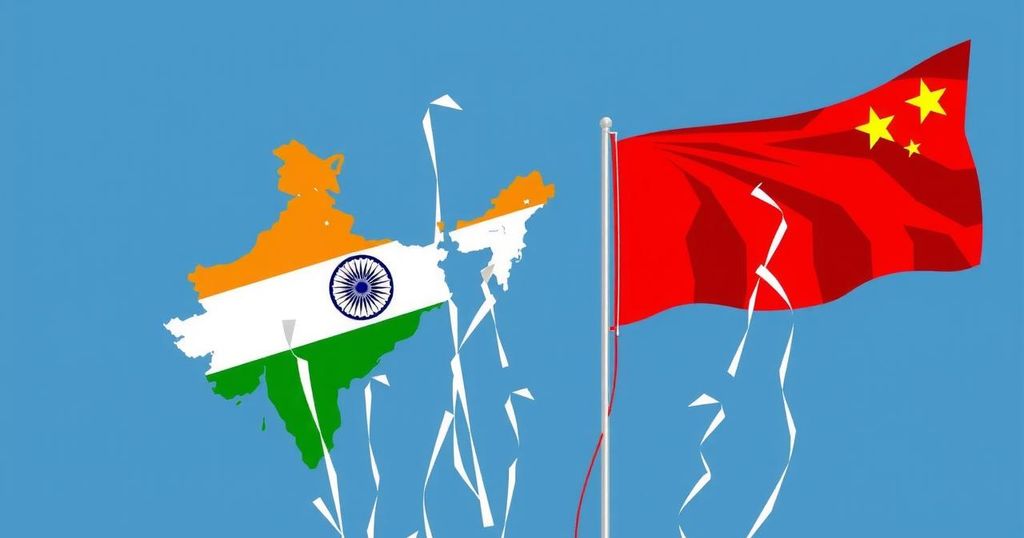India-China Relations: A Gradual Thaw and Persistent Economic Caution
Despite recent diplomatic easing between India and China, lingering tensions from the 2020 Galwan clash dictate ongoing restrictions on Chinese investments and trade into India. Indian policymakers may reevaluate foreign direct investment from China, while emphasizing local production to reduce dependency on Chinese imports. Prime Minister Modi and President Xi Jinping’s recent talks hint at potential economic collaboration, although major barriers remain.
Despite a recent de-escalation of tensions between India and China, the repercussions of the 2020 Galwan Valley clash continue to shape bilateral relations and economic policies. While the Indian government may gradually relax some restrictions on Chinese businesses, stringent regulations concerning Chinese trade and foreign direct investment (FDI) are expected to persist. Discussions within governmental circles suggest that while the importation of specific machinery for India’s manufacturing sector could proceed smoothly, FDI from China will remain subject to individual scrutiny under existing regulations that mandate central government approval for investments from neighboring countries. It is anticipated that the normalization of border relations may lead to an enhancement of FDI flows, potentially benefiting both countries economically. The recent dialogue between Prime Minister Narendra Modi and President Xi Jinping at the BRICS Summit underscores a willingness from both parties to explore avenues for economic cooperation despite previous hostilities. Economists within the Indian administration advocate for a measured reconsideration of FDI from China, emphasizing the importance of local joint ventures to diminish the nation’s reliance on Chinese imports. Furthermore, if relations improve sufficiently, India may contemplate rejoining the Regional Comprehensive Economic Partnership (RCEP), after having exited the agreement in 2019 over concerns regarding the implications of China’s presence. Since the Galwan clash, India has implemented a series of restrictions on Chinese businesses, which have included banning numerous applications, rigorous customs inspections, and heightened control over investments from China. The initiative known as Aatmanirbhar Bharat (Self-Reliant India) has been pivotal in promoting local manufacturing and reducing dependency on foreign imports. As trade dynamics evolve, India’s ongoing efforts to curtail imports while simultaneously fostering domestic production may have implications for the global supply chain, especially within the electronics sector. Despite the challenges faced, the long-term objective remains clear: to assert Indian capabilities while cautiously engaging with Chinese investment opportunities and engagements.
The India-China border tensions have a complex history, marked notably by the violent clashes in June 2020 at Galwan Valley. This incident has since led to a series of economic measures enacted by India aimed at limiting Chinese influence in various sectors. These measures emerged amidst a broader strategic initiative by India to enhance self-sufficiency, promote local industries, and secure economic interests against potential risks associated with Chinese investments. With both nations having significant trade interdependence, particularly in the realms of electronics and manufacturing, the repercussions of these measures are felt within global supply chains and local economies. The dialogue between the two nations following the BRICS Summit represents a potential thaw in relations, but the cautious approach toward Chinese investment remains a significant component of India’s economic strategy going forward.
In summation, while recent diplomatic efforts signal a thaw in India-China relations, the legacy of the Galwan clash will continue to influence India’s trade and investment policies. With a focus on local production and cautious evaluation of Chinese FDI, India aims to balance its economic strategy while remaining vigilant about national security concerns. The ongoing dialogue and potential collaboration in specific sectors may provide avenues for enhanced bilateral trade, but significant barriers still exist.
Original Source: www.livemint.com







Post Comment